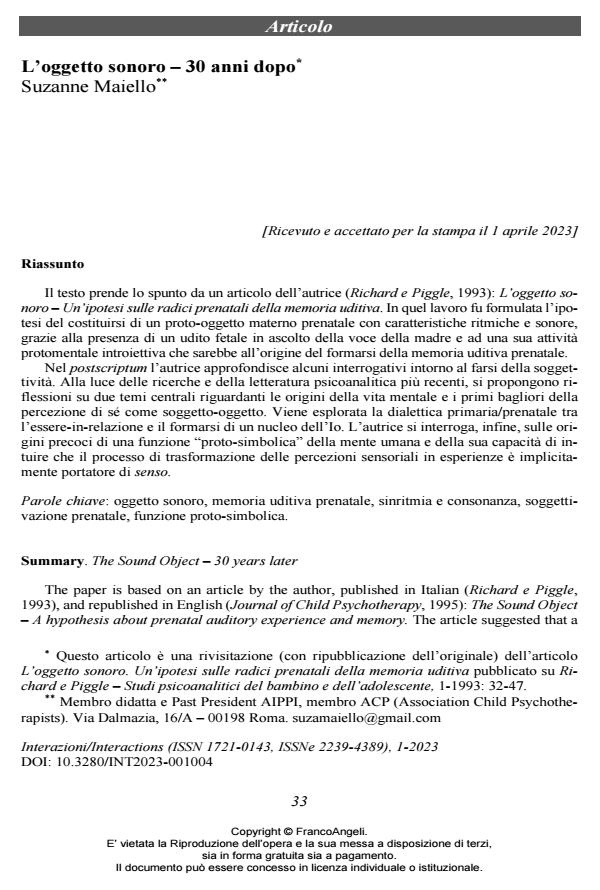The Sound Object - 30 years later
Journal title INTERAZIONI
Author/s Suzanne Maiello
Publishing Year 2023 Issue 2023/1
Language Italian Pages 22 P. 33-54 File size 221 KB
DOI 10.3280/INT2023-001004
DOI is like a bar code for intellectual property: to have more infomation
click here
Below, you can see the article first page
If you want to buy this article in PDF format, you can do it, following the instructions to buy download credits

FrancoAngeli is member of Publishers International Linking Association, Inc (PILA), a not-for-profit association which run the CrossRef service enabling links to and from online scholarly content.
The paper is based on an article by the author, published in Italian (Richard e Piggle, 1993), and republished in English (Journal of Child Psychotherapy, 1995): The Sound Object - A hypothesis about prenatal auditory experience and memory. The article suggested that a maternal proto-object with sound and rhythmical qualities develops during prenatal life thanks to the foetus’ capacity to hear and listen to the mother’s voice, together with its protomental introjective activity which may underlie the development of the prenatal auditory memory. In the Postscript the author gives further thought to issues around the emergence of sub-jectivity. Her considerations, based on more recent research and psychoanalytic literature, are focused around two crucial areas of enquiry: the origins of mental life and the first flickers of awareness of the self as a subject-object. She explores the primary/prenatal dialectic between relatedness and the emergence of an ego nucleus, as well as the early origins of a "proto-symbolic" function of the human mind and its capacity to intuit that the transformational pro-cess of sense perceptions into experiences is implicitly a bearer of meaning.
Keywords: sound object, prenatal auditory memory, synrhythmicity and consonance, prenatal subjectivation, proto-symbolic function.
Suzanne Maiello, L’oggetto sonoro - 30 anni dopo in "INTERAZIONI" 1/2023, pp 33-54, DOI: 10.3280/INT2023-001004